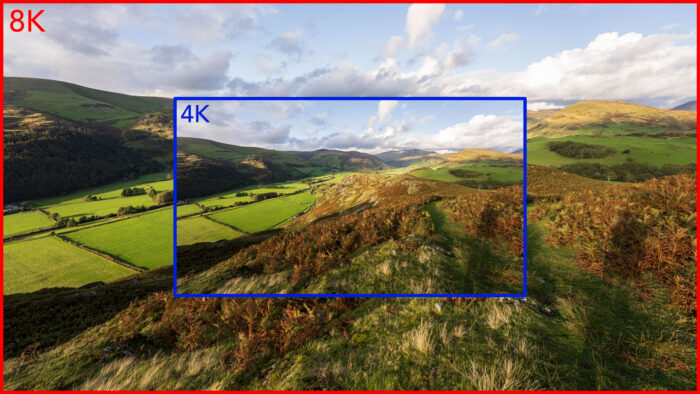The Sony A7S III is the long-awaited successor of the A7S II, and it took the company almost five years to release it. However it was worth the wait because the new model is a significant improvement over its predecessor.
The Canon EOS R5 is the first mirrorless model with 8K video recording, and there was a lot of hype surrounding the camera when it was first teased. It proved to be a great step forward in comparison to the earlier EOS R, but not without its share of controversy regarding overheating in video mode.
Let’s see how these two cameras compare.
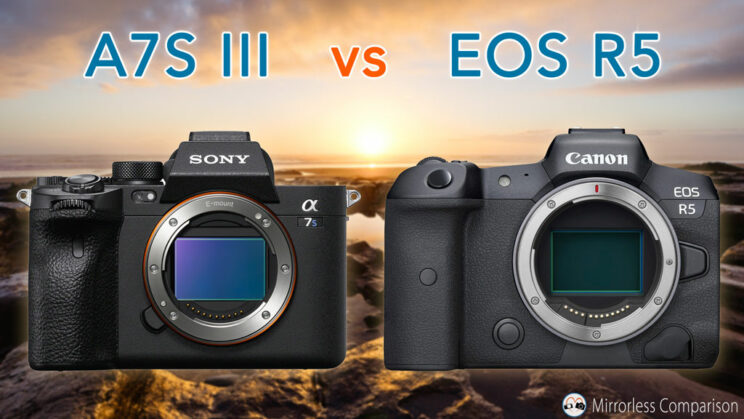
Ethics statement: the following is based on our personal experience with the R5 and official specs about the A7S III. We were not asked to write anything about these products, nor were we provided with any sort of compensation. Within the article, there are affiliate links. If you buy something after clicking the link, we will receive a small commission. To know more about our ethics, you can visit our full disclosure page. Thank you!
1. Sensor
Both cameras feature a 35mm (full frame) sensor and a low pass filter, but the resolution is different: 12.1MP for the A7S III and 45MP for the R5.
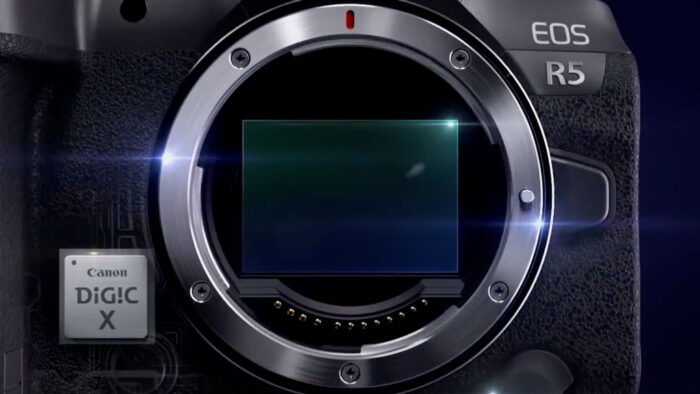
The Sony has a sensor designed primarily for video use. The lower megapixel count allows the camera to have a vaster sensitivity range and produces less noise at high values in comparison to the R5.
| ISO | A7S III | R5 |
|---|---|---|
| Photo | 80-102,400 (40-409,600) | 100-51,200 (50 to 102,400) |
| Video | 80-102,400 (80-409,600) | 100-51,200 |
Furthermore, the Sony sensor has a dual gain architecture design. This means that when it reaches a certain ISO level (1,600 with the standard profile or 12,800 when using S-Log2 or S-Log3), the camera switches to a second circuit in order to reduce the amount of noise, improving the quality in low light situations.
The Canon R5 has been designed to satisfy both photographers and videographers. For example, 45MP is not only useful for 8K video, but it is also a good resolution for landscape photographers who want to capture the finest details, or wildlife photographers that often need to crop their images to get closer to the animal.
The R5 chip has a dual-gain design too, with the second circuit kicking-in at ISO 400 (with C-Log) or ISO 800 (with C-Log3).
2. Video
If you’re reading this article, you’re most likely interested in one of these two cameras for their video functionalities, and there is a lot to talk about.
8K vs 4K
The first major difference is that the R5, thanks to its higher resolution sensor, can record 8K video, whereas the A7S III only does 4K.
Internal vs external RAW
The second major difference is that the Canon model can record RAW video internally (8K DCI 12-bit). With the A7S III, you need an external recorder such as the Atomos Ninja V, connected to the HDMI port, to record 16-bit RAW footage (up to 60p).
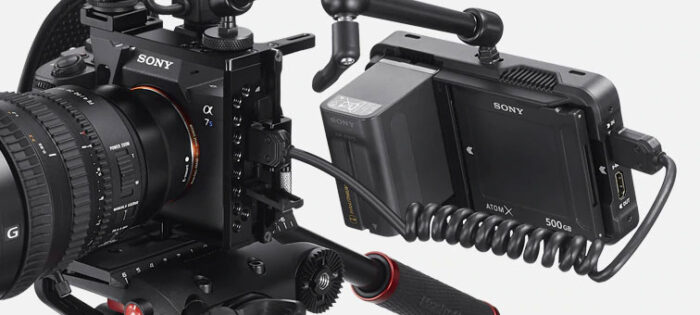
Note that the external recorder option (with 8K RAW) is available for the Canon model as well, but you’ll need The Ninja V+ model. For 8K RAW, you need firmware 1.4.0 on the R5.
Slow motion
Both cameras can record at a maximum of 120fps in 4K.
In 1080p, the A7S III goes up to 240fps, while the R5 doesn’t go faster than 120fps.
Sensor crop and pixel readout
The R5 can record 8K and 4K (up to 30p) with oversampling (full pixel readout) and no sensor crop. With 4K at 60p and 120p, there is still no crop but the camera does line-skipping, which means the quality is lower (less sharpness, more aliasing).
Up to 60p, the A7S III records 4K with the entire width of the sensor. At 120p, there is a small crop of 1.1x. For all the frame rates in 4K, the camera does oversampling (full pixel readout).
Codecs and bitrates
Both cameras can record 10-bit 4:2:2 internally. The R5 uses the H.265 codec to do so, whereas with the A7S III you have the option of XAVC HS (H.265 IPB compression) or XAVC S-I (H.264 All-Intra compression). 10-bit 4:2:2 is also available via the HDMI port on both products.
Here is a list of all the maximum bit-rates for each resolution and frame rate.
| Format | A7S III | R5 |
|---|---|---|
| 8K RAW | – | 2600Mbps |
| 8K | – | 1300Mbps |
| 4K 120p | 280Mbps | 1880Mbps |
| 4K 60p | 600Mbps | 940Mbps |
| 4K 30p | 300Mbps | 470Mbps |
| FHD 120p | 100Mbps | 360Mbps |
| FHD 60p | 222Mbps | 180Mbps |
| FHD 30p | 111Mbps | 90Mbps |
Gamma and colour profiles
Both cameras can record with Log profiles (S-Log2 and S-Log3 for the Sony, C-Log and C-Log3 for the Canon). Note that C-Log3 requires firmware 1.3.1 on the Canon.
HDR profiles are available as well, although they use different standards: HLG (Hybrid Log Gamma) for the A7S model, HDR PQ (Perceptual Quantization) for the Canon.
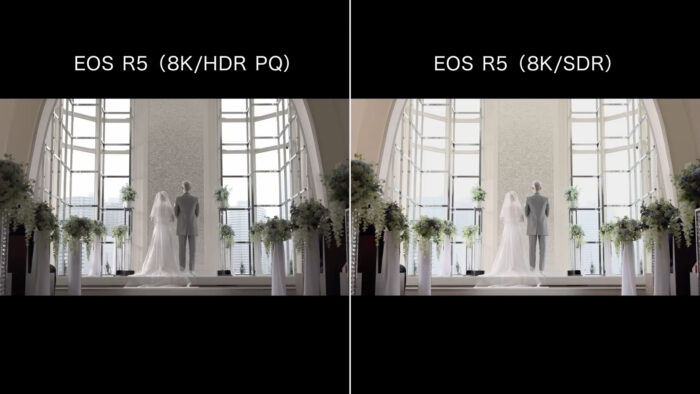
The Sony has more settings to let you customise the image in camera, including all the advanced options available with the Picture Profiles.
Recording limitation
Technically, the A7S III has no recording limitation in any of the video formats. You can find various tests online, and it seems that the camera is capable of recording 4K 60p for more than an hour, and 4K 120p for more than 30 minutes.
On paper, the R5 has a cap of 30 minutes per clip. In real world use, the duration can be much lower, the primary reason being overheating.
There has been extensive testing on this matter online, and Canon has also released various firmware updates to improve the duration, but it looks like the A7S III remains superior thanks to its heat dissipation design that includes a Σ (sigma) shaped graphite-alloy heatsink.

It’s also important to note that the R5 overheats not only when recording 8K, but also with 4K/30p if you choose the highest quality setting (which oversamples the sensor like 8K).
Audio
Both cameras have a 3.5mm microphone input and a 3.5mm headphone output.
The A7S III also has a digital audio interface embedded in the Multi-Interface shoe on top of the camera. With compatible Sony digital microphones, the A7S model can record a digital audio signal without the need for analog cables.
3. Autofocus and drive speed
Both cameras feature an advanced hybrid autofocus system.
The A7S III uses 759 phase detection points and 425 contrast detection points. The phase areas cover approximately 92% of the sensor surface.
The R5 uses Canon’s latest Dual Pixel CMOS AF and, when Tracking is selected, the entire sensor area is used. If you select the Single AF method, there are 5940 points available.
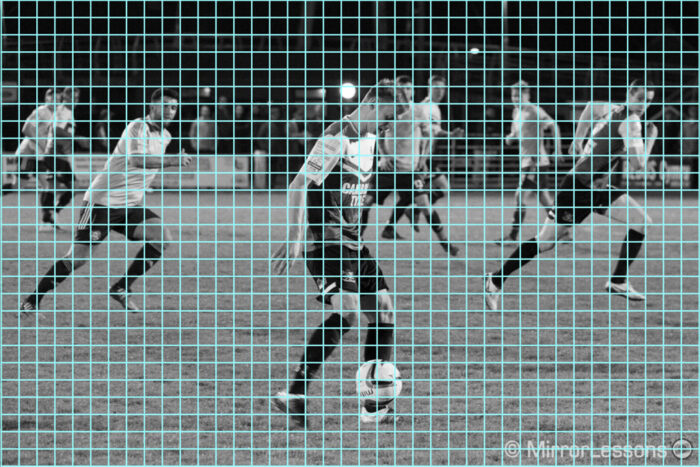
Phase detection is available for still and video on both cameras, and in every recording format.
Both models feature advanced features with deep learning technology, such as Eye AF. The latter works with humans and animals in still/video mode for the R5 and in still mode on the A7S III. In video mode, it is human only for the Sony.
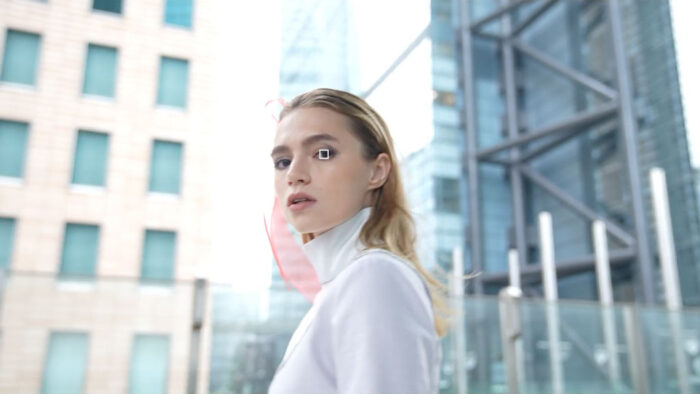
The A7S model has an advantage in terms of low light sensitivity: it has a rating of -6Ev with a f/2 aperture. The R5 does -6Ev but with a f/1.2 aperture, which equals to -4.5Ev with a F2 lens. For video, the rating drops by one stop on the Canon (-3.5 at f/2).
Both cameras include various settings to control the reactivity and smoothness of the autofocus during still or movie recording.
Concerning the continuous shooting speed, the R5 does 12fps with the mechanical shutter, and 20fps with the electronic shutter, while maintaining continuous AF and auto exposure. The A7S III does 10fps tops.
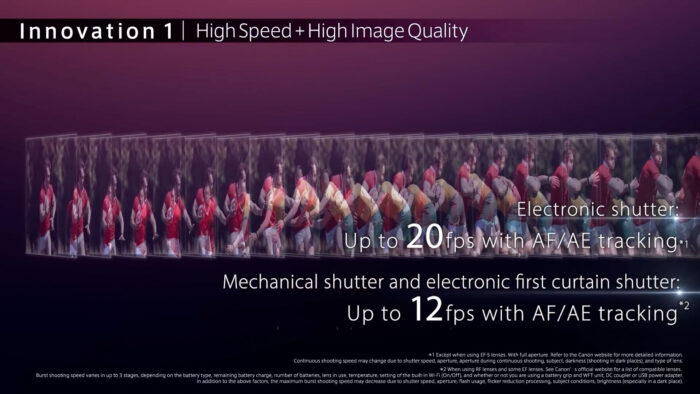
Obviously, the slower frame rate coupled with smaller files allows the Sony to have a much larger buffer: 1,000 uncompressed RAW in comparison to 180 RAW files on the R5 (at 12fps).
Finally, the Dual Pixel CMOS AF technology of the R5 gives the camera an extra feature called Dual Pixel RAW. When enabled, the camera saves in the RAW file the depth information captured by the phase detection pixels.
Then, with Canon’s Digital Photo Professional software, you can make small adjustments to correct focus, change the bokeh or adjust the light on a person’s face. Note that with this mode, the frame rate drops significantly and other features such as the electronic shutter are not available.
4. Image stabilisation
The A7S III and EOS R5 feature in-body image stabilisation, and it works with 5 axes (roll, pitch, yaw, x and y). It can work on its own, or paired with the optical stabilisation of a lens.
The R5 has an impressive rating of 8 stops of compensation, although it is lower with certain lenses. The A7S III has a rating of 5.5Ev by comparison.

Both cameras have extra settings available for video recording.
The Sony has a setting called Active Mode which uses the data from the gyro sensor inside the body. It crops the field of view a little but improves the performance. Note that it works only up to 4K 60p.
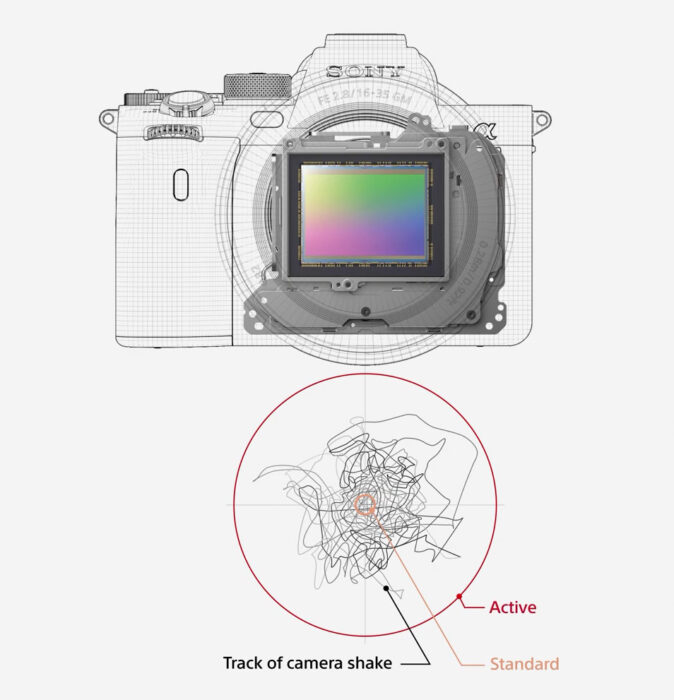
The R5 has Digital IS with two modes: normal and enhanced. The latter reduces the field of view further but also makes the image more stable.
5. Viewfinder and monitor
Let’s talk about the two parts that allow you to compose the image: electronic viewfinder and LCD screen.
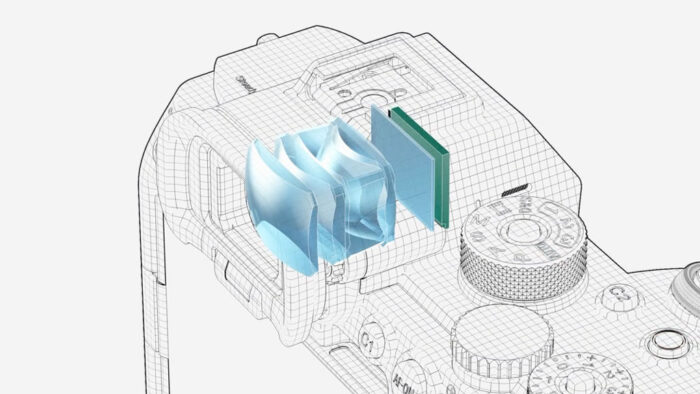
The EVF on the A7S III has impressive specs, although the one on the R5 defends itself well.
| Viewfinder | A7S III | R5 |
|---|---|---|
| Resolution | 9.44M dots | 5.76M dots |
| Magnification | 0.9x | 0.76x |
| Refresh rate | 120Hz | 120Hz |
| Eyepoint | 25mm | 23mm |
Concerning the rear monitor, they are both touch sensitive and have a multi-angle mechanism. The one on the R5 is a bit larger (3.15-in vs 3.0-in) and has more resolution (2.1M vs 1.44M dots).
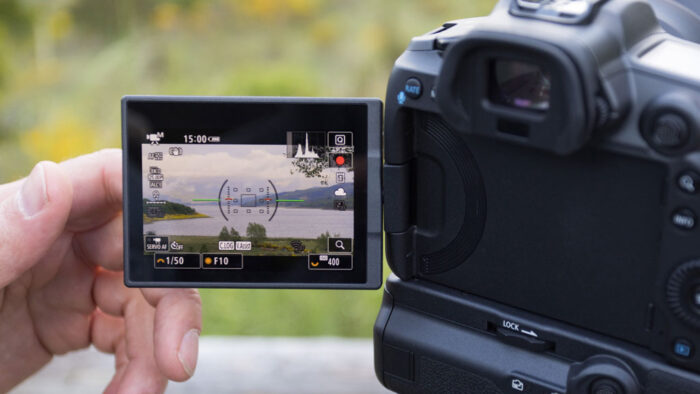
6. Design
The A7S III is slightly smaller and lighter than the R5. Both feature a magnesium alloy chassis and are weather sealed.
- A7S III: 128.9 x 96.9 x 80.8mm, 699g
- EOS R5: 138 x 97.5 x 88.0mm, 738g
The R5 shape is a bit more rounded overall, whereas the Sony has sharper edges.
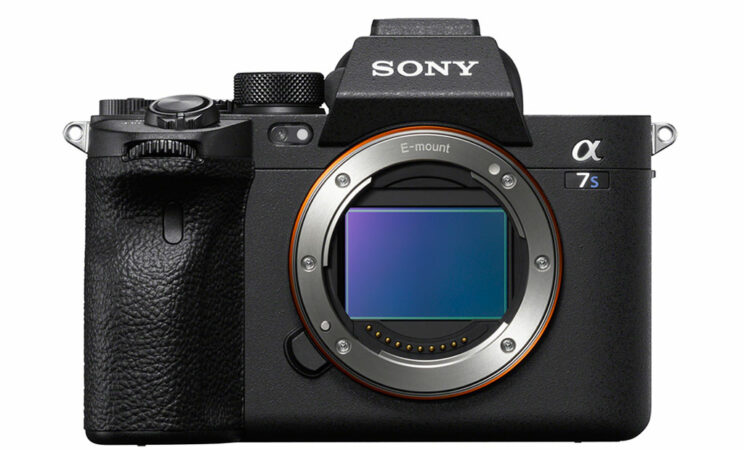
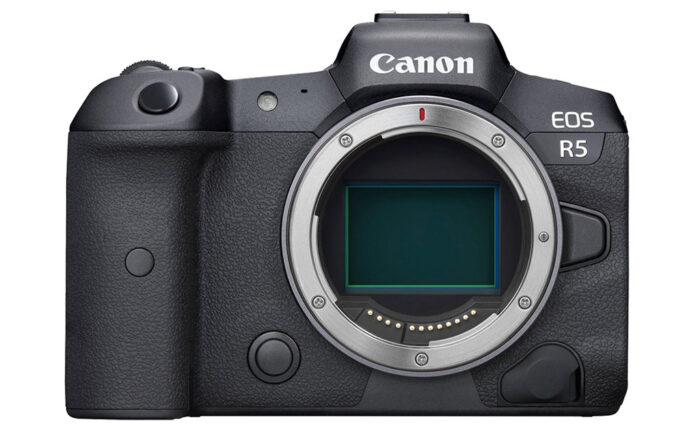
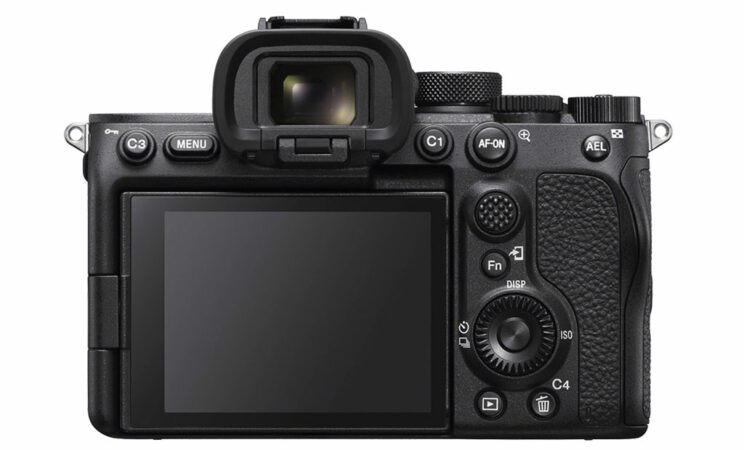
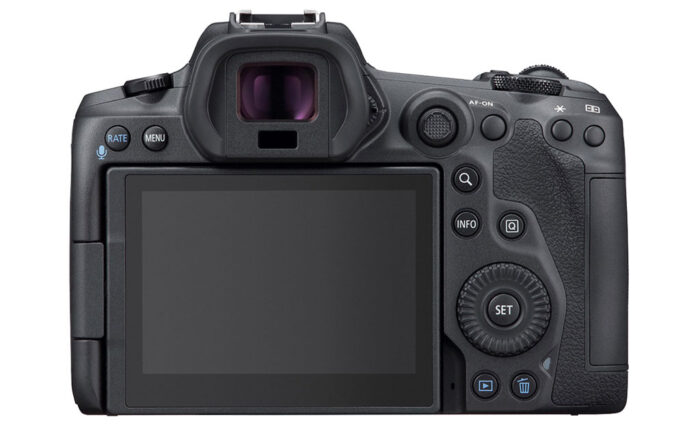
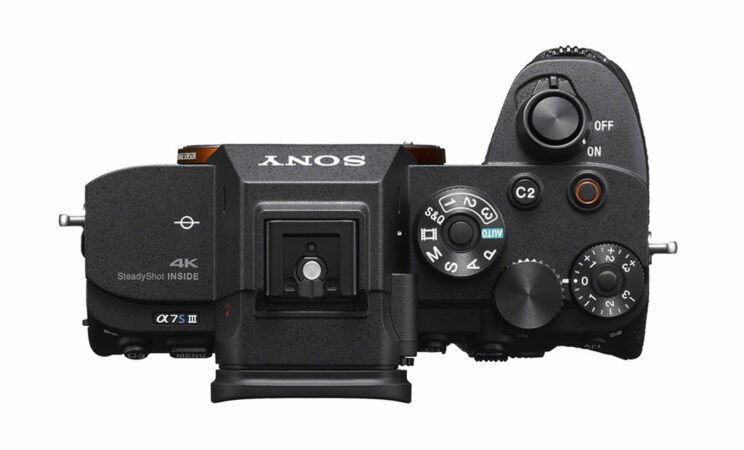
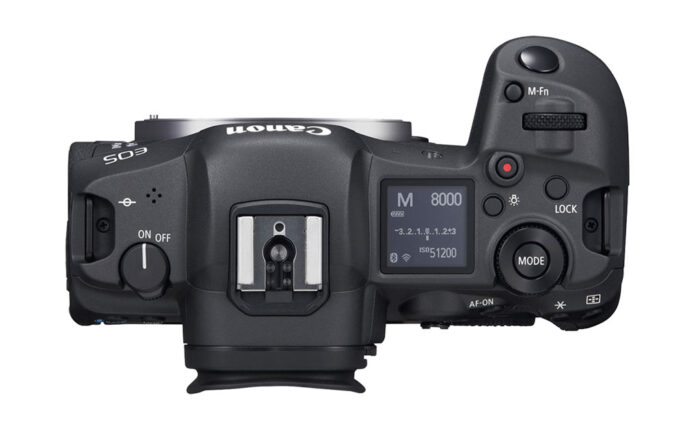
The Canon has a small monitor on top to check information at a glance, and lacks the default PSAM dial (you press the M button instead). The customisable button on the front is also handy.
The A7S model has an exposure compensation dial on top which is also very useful.
Both cameras feature a lot of controls on the rear, and overall a good to excellent level of customisation.
7. Memory cards
The A7S III features two memory card slots, and both slots accept two different types of cards: SD (UHS-II) and CFexpress Type A.
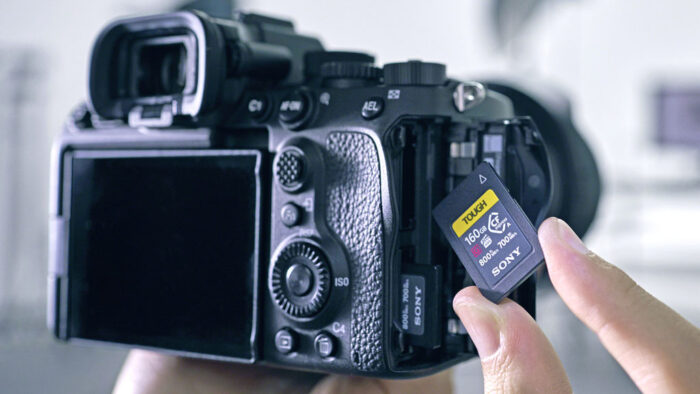
CFexpress cards have faster writing and reading speed, but they are also more expensive. They are required when recording 4K 120p.
The R5 has two slots as well: one for SD cards (UHS-II) and one for CFexpress Type B cards. Note that Type A and Type B CFexpress cards have a different size, so they’re not interchangeable. The CFexpress card is required when recording 8K on the Canon.
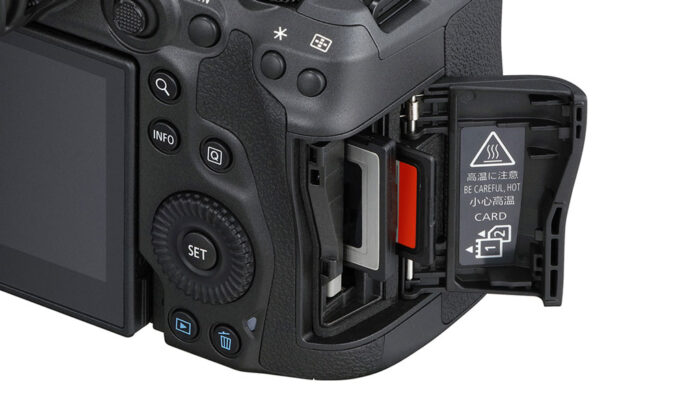
8. Battery life
The A7S III has a good battery life rating with 510 shots (EVF) or 600 shots (LCD).
The R5 battery rating is lower: 320 with the EVF and 490 images with the LCD.
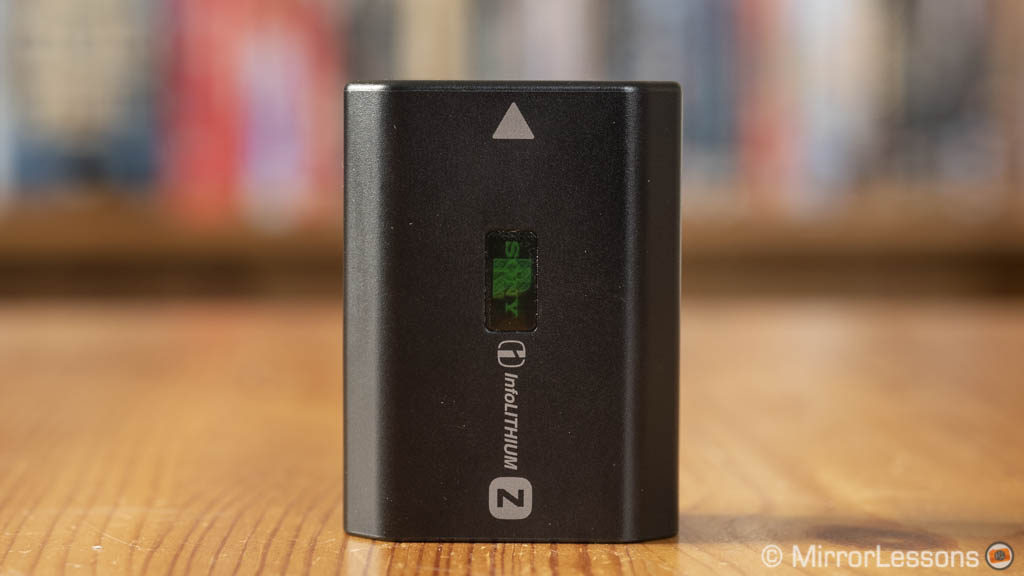
9. Lenses
Each camera uses a different lens mount and, consequentially, are part of a different system of lenses and accessories.
The Sony E-mount has existed since 2010 (2013 since the first full frame products) and today, it has the advantage of offering a vast catalogue of lenses not only from Sony itself, but also third party brands including Sigma, Tamron, Zeiss, Samyang just to name a few. There is something for every budget, and you can also find various Cine-lenses available in E-mount.
The Canon RF system is more recent (2018) but Canon has already released a lot of lenses that cover most of the focal lengths needed, from wide to tele, especially for professional use, but for most of these, the price is high.
The list expands considerably if you take into account the EF to EOS R adapter and the huge list of Canon/3rd party EF lenses, including cinema lenses as well. Note that among the official Canon mount adapters, there is the one with drop-in filters, which can be very useful for video.
It’s worth noting though that you can easily adapt Canon EF lenses on the A7S III and this is a common practice among Sony users, especially when it comes to movie work.
10. Price
The A7S III can be found for $3500, £3800 or €4200.
The R5 is more expensive, selling for $3900, $4300 or €4600.
Prices are for the body only, as of September 2021.
Conclusion
If you’re here, chances are that you are more interested in the video characteristics of the these two cameras, because that’s where they really compete. The A7S III is designed primarily for video-makers, whereas the R5 wants to be the perfect hybrid with great photo capabilities and impressive video specs.
If I were to choose one for video, I would personally go for the Sony for a couple of reasons. I wouldn’t make much use of 8k video, if not for occasionally cropping the footage in a 4K timeline. I wouldn’t want to stress about overheating issues and, last but not least, the A7S III feels like a more carefully crafted too. Sony really took its time to deliver the best camera possible with more reliable performance, rather than chasing the ultimate resolution to please the marketing department.
Don’t get me wrong, there are many things I like about the R5, starting with its ergonomics, but I would consider it for its still capabilities, which are really good, especially for wildlife and birds in flight.
Check price of the Sony A7S III on
Amazon | B&H Photo | eBay
Check the price of the Canon EOS R5 on:
Amazon | Amazon UK | B&H Photo | eBay

